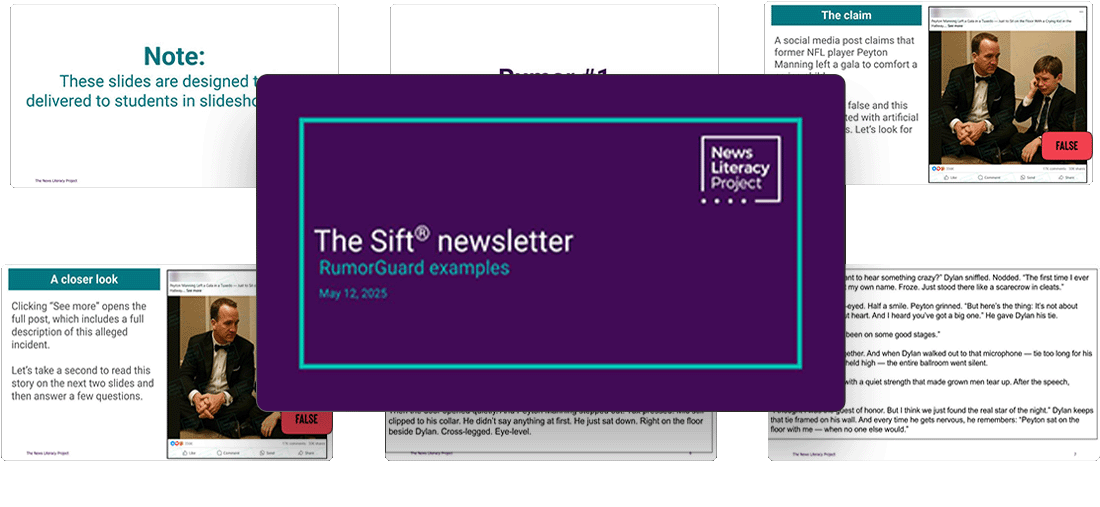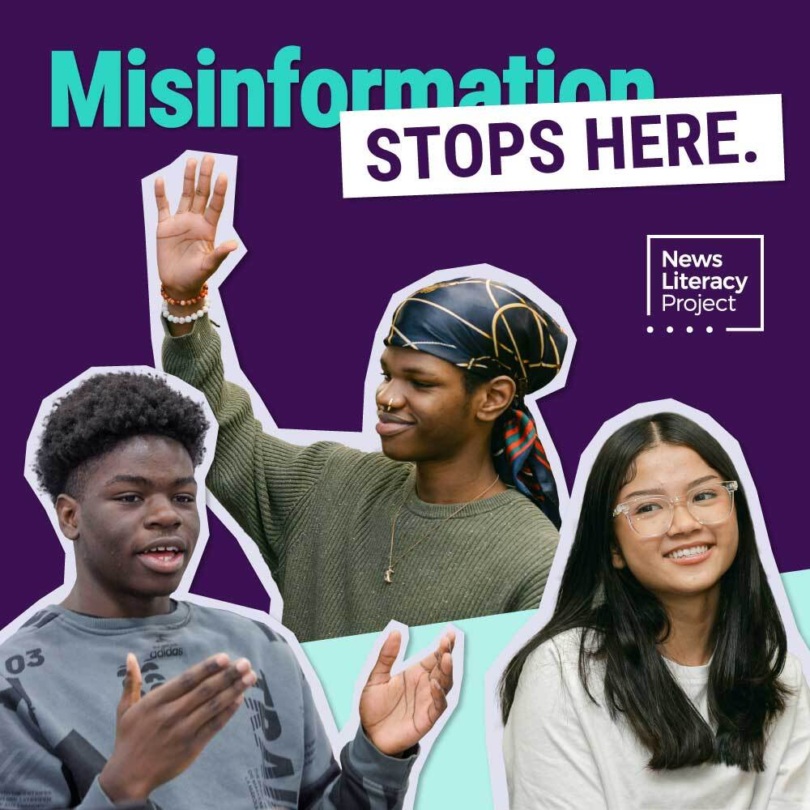The Sift: Pulitzer wins | Peyton Manning rumor
|
Coming up: NLP is launching a newsletter for families! Scroll Smarter will help families understand and navigate today’s information landscape together. Interested? Subscribe at this link and share it with friends.😊 You’ll start receiving this monthly newsletter in September. Also, don’t miss next week’s Sift issue — it’s the last one of the school year. We’re sharing a roundup of popular news literacy resources and stories for you. |
In this issue
Pulitzer wins | Peyton Manning rumor | RumorGuard slides | Daily Do Now slides
Daily Do Now slidesDon't miss this classroom-ready resource.  |
Top picks
Here are the latest news literacy topics and tips on how to integrate them into your classroom.


| The Pulitzer Prize Gold Medal is awarded annually to the winners of the public service category. |
1. Pulitzer Prizes for cartoonist, nonprofit sites
The Pulitzer Prize is the highest honor in American journalism, awarded annually since 1917. This year’s awards were announced on May 5 and the winners and finalists offer a collection of excellent reporting and commentary, with many standout recipients.
Political cartoonist displayed ‘fearlessness’
When Washington Post editorial cartoonist Ann Telnaes submitted a sketch of media executives — including Jeff Bezos, the paper’s owner — bowing to President Donald Trump, it was nixed by an editor. Telnaes resigned in protest. The cartoon went viral online and the controversy was mentioned when Telnaes won her second Pulitzer Prize in the category of Illustrated Reporting and Commentary.
The Pulitzer board wrote that Telnaes delivered “piercing commentary on powerful people and institutions with deftness, creativity — and a fearlessness that led to her departure” from The Washington Post after 17 years. (For more on Telnaes’ sketch, see the Jan. 13 issue of The Sift.)
Investigative newsroom recognized for public service
For the second year in a row, ProPublica, an investigative nonprofit news outlet, won a Pulitzer Prize in the prestigious public service category. ProPublica’s “Life of the Mother” series investigated the impact of state abortion bans on women’s health, including pregnant women who died after care was delayed by doctors fearful of violating laws they felt were vague.
The Baltimore Banner wins its first Pulitzer
Journalists at The Baltimore Banner were awarded a Pulitzer Prize in local reporting for their series on the fentanyl crisis. This is a striking achievement for a local nonprofit newsroom that was launched just three years ago.
| Discuss: |
What makes a piece of journalism worthy of a Pulitzer Prize? How are editorial cartoons a unique form of opinion journalism? How might their impact differ from opinions published as columns? How do journalists serve as a watchdog for the government and people in power?
| Idea: |
Have students use this Dig Deeper think sheet (from 2024) to evaluate a piece of journalism from the list of 2025 Pulitzer Prize winners.
★ NLP Resources:
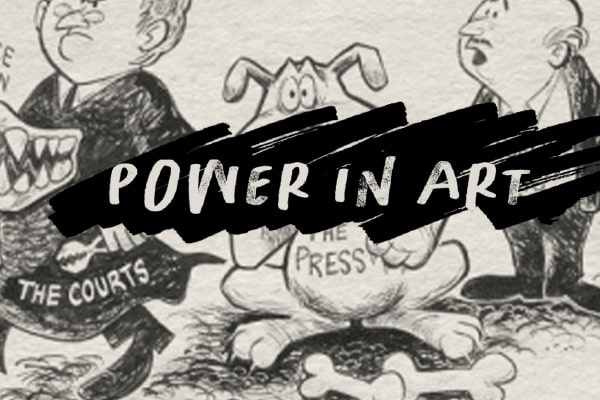

“Power in Art: The Watchdog Role of Editorial Cartoonists” (Checkology® virtual classroom)


Recorded webinar: “Power in Art: Elevate Student Voice with Editorial Cartooning”
| Related: |
2. Historic photos of Trump win Pulitzer Prize
Veteran New York Times photographer Doug Mills captured the moment a bullet grazed then-presidential candidate Donald Trump’s ear at a campaign rally last summer — part of a series of images that recently won a Pulitzer Prize in breaking news photography. It was a historic political moment, and the first of two assassination attempts against Trump during his campaign. Another photo in the series — of Trump with blood on his head and his fist in the air as he shouted “Fight! Fight! Fight!” — became iconic, including among the president’s supporters.
Mills, who has covered every president since Ronald Reagan, continued to take photos after the shooting started despite the risk.
In the feature photography category, Moises Saman won a Pulitzer for his black-and-white photos of a Syrian prison published in The New Yorker.
| Discuss: |
How do these Pulitzer Prize-winning photos help the public understand current events and stories — now and for future generations? What if no photojournalists had been present at the rally that day? How might the information aftermath of the event have been different? What if no reporters had been there?
| Idea: |
Use the “Quality journalism” slide of Week 23 of the Daily Do Now Resource to further explore this topic.
- Another idea: Share this News Goggles video featuring a Pulitzer Prize-winning photojournalist with students, along with this Dig Deeper viewing guide.
★ NLP Resources:
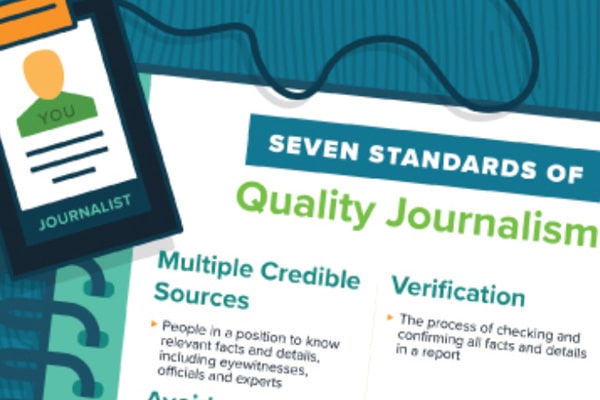

Infographic: “Seven standards of quality journalism”


Infographic: “Breaking news checklist”
| Related: |
3. New ethical rules for AI photos?
A filtered selfie. An image generated by artificial intelligence. A deepfake. When posting these kinds of images to social media, should users disclose that they’re not authentic?
While there’s a gray area, AI ethics researcher Martin Bekker says that it’s generally more ethical to be transparent about images that have been manipulated or fabricated. He recommends labeling such images with an “enhancement acknowledgment” line. He also advises explaining how the image was altered: corrected, enhanced, body manipulated, object manipulated or generated.
Using a selfie filter may be generally harmless, but inauthentic images are often used in disinformation campaigns that aim to sow distrust.
| Discuss: |
How do manipulated or AI-generated images on social media affect trust among social media users? Should social media platforms require users to disclose whether an image is manipulated or AI-generated? How could deepfakes or manipulated images cause harm?
| Idea: |
Use this special artificial intelligence collection of Daily Do Now teaching slides, which provides 5- to 10-minute bell ringer activities related to AI.
★ NLP Resources:
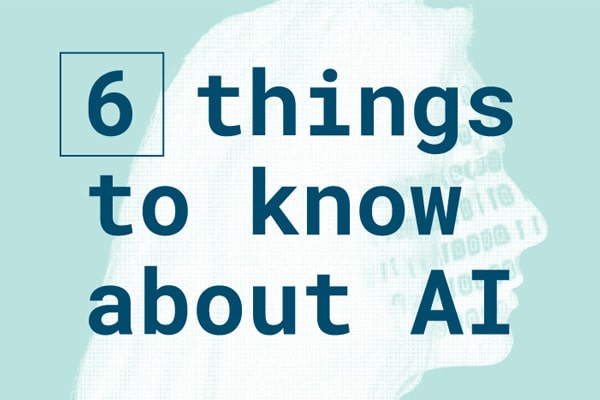

Infographic: “6 things to know about AI”
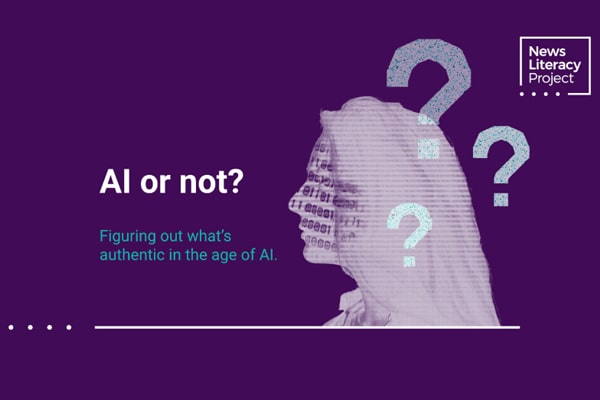

Lesson: “AI or not?”


“Introduction to Algorithms” (Checkology virtual classroom)
| Related: |
- “Beauty, gender, and age: this is how generative AI portrays the diversity of Latinx people.” / “Belleza, género y edad: así retrata la IA generativa la diversidad de las personas latinas” (Factchequeado).
- Note: This article is in Spanish, but most web browsers have an automated translation feature that can translate this page into English.
- “Sister creates AI video of slain brother to address his killer in court” (The Washington Post).
- “Agatha Christie, Who Died in 1976, Will See You in Class” (The New York Times).


★ Featured classroom resource:
|
No, Peyton Manning didn’t leave gala to console crying child
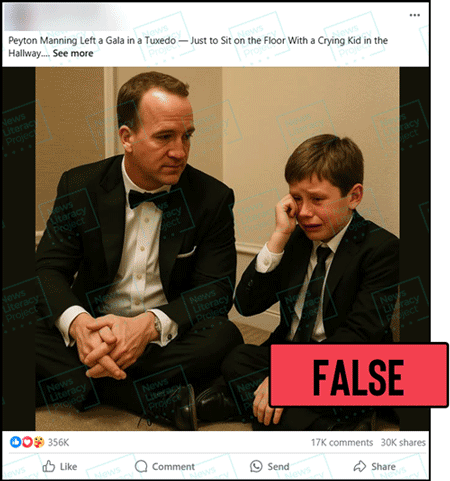

❌ NO: This is not a genuine photograph of former NFL quarterback Peyton Manning consoling a child outside of a fancy gala.
✅ YES: This image was created with artificial intelligence tools.
✅ YES: This story is fictional and designed to generate engagement on social media.
★ NewsLit takeaway
Stories that elicit strong emotional reactions tend to get more engagement on social media. This is frequently exploited by clickbait accounts that prioritize traffic over facts. Here are some tips to spot these feel-good fabrications:
Look for and verify details: These stories often circulate with fuzzy details about when or where a supposed incident took place. If a source can’t give you the basic facts, there’s reason to be skeptical.
Consider the source: Clicking an account name and looking at their profile and previous posts is a good way to get additional context. The account that shared this story about Manning has shared dozens of similar anecdotes about the former football star’s alleged good deeds, such as Peyton buying a family a minivan and calming a crying baby on a plane. The sheer volume of these false stories is an indication that this source may not be reliable.
Get a second opinion: A quick web search is another easy way to check the veracity of viral social media content. If this story were true, there would likely be additional sources that could confirm it. The absence of additional sources is a reason to be cautious.
No, a creature called ‘Sleeping Rose Mantis’ isn’t real
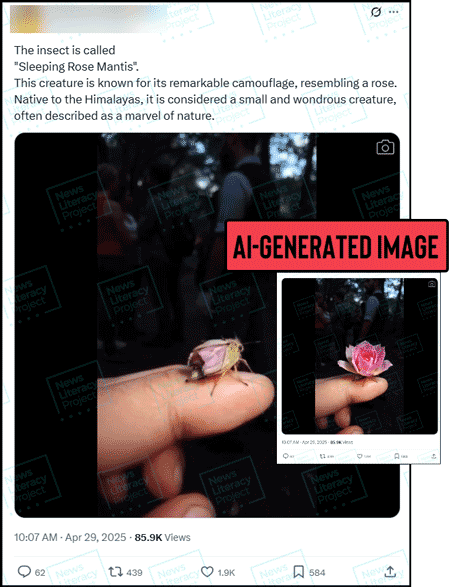

❌ NO: The video does not show a genuine insect called the “Sleeping Rose Mantis.”
✅ YES: It was created with artificial intelligence tools.
★ NewsLit takeaway
Images and videos depicting unusual animals can rack up millions of views on social media. This content may elicit a strong emotional response, such as a feeling of awe, which can hinder critical thinking and make people more susceptible to falsehoods. Here are a few tips to spot these misleading videos:
Research the originating source. Who filmed this video? Where was it first published? Track viral content back to its source to verify its authenticity. In this case, the video came from a “digital creator” and from “cryptologists” who frequently publish AI-generated content.
Take a screenshot. To find a video through a reverse image search, do this step first.
Try a text search. Use relevant keywords, like “sleeping rose mantis,” and look for information from reputable sites, organizations with science expertise and standards-based news outlets. Remember, lack of coverage from credible sources is often a red flag.


| Student journalists at Alexandria City High School in Virginia are producing impactful news reports — but their school district proposed a policy to censor them. In response, the students fought for editorial independence by writing “Voices Unbound,” their own policy to support press freedom, and rallying community support. | |
| Americans are trusting each other less and less — and 54% say misinformation has a big impact on their confidence in each other, a Pew Research Center study found. | |
| Prominent corrections. Explainers on ethics. Transparency in reporting. These are actions some newsrooms are taking to boost trust with readers. | |
| Kids under age 13 will soon have access to Gemini, Google’s AI chatbot, to help with homework and generate images. But parents or guardians can turn this feature off if they prefer. | |
| Need therapy? Beware of AI chatbots posing as therapists, some even claiming they are certified and licensed — complete with fake license numbers. | |
| Teens with mental health conditions like depression or anxiety spend more time on social media than other teens and compare themselves more with others, according to a new study. | |
| The White House press pool has been reshaped in the last few months to include 32 new media outlets. Of those outlets, 60% are openly partisan and friendlier to President Donald Trump. For decades, an independent nonprofit chose the makeup of the press pool, but the White House took control of it on Feb. 25. | |
| “Crunchy teens” are going viral as wellness influencers, spreading nutrition misinformation and peddling questionable supplements and products, like fluoride-free toothpaste. |
Thanks for reading!
Your weekly issue of The Sift is created by Susan Minichiello (@susanmini.bsky.social), Dan Evon (@danieljevon), Peter Adams (@peteradams.bsky.social), Hannah Covington (@hannahcov.bsky.social) and Pamela Brunskill (@PamelaBrunskill). It is edited by Mary Kane (@mk6325.bsky.social) and Lourdes Venard (@lourdesvenard.bsky.social).
You’ll find teachable moments from our previous issues in the archives. Send your suggestions and success stories to [email protected].
Subscribe to this newsletterSign up to receive NLP Connections (news about our work) or update your subscription preferences here. |


Check out NLP's Checkology virtual classroom, where students learn how to navigate today’s information landscape by developing news literacy skills.



